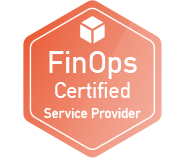6 Top Tips for Well Optimised Cloud Spend
/4.png?width=200&name=4.png)
Dropbox recently announced that it has saved nearly $75 million by repatriating workloads from the public cloud and building its own tech infrastructure in-house, swimming against the current of the last decade which has been leading more and more large enterprises, and SMEs, towards public cloud.
Are cloud costs well spent?
Enterprise spending on cloud infrastructure services grew by 35% to reach almost $130 billion in 2020, while spending on data center hardware and software dropped 6% to $89 billion, according to Synergy Research Group. The pandemic certainly accelerated the shift to cloud, but with all this money being thrown at public cloud services is it time to ask whether it's being well spent?
For most companies, who don’t have the volume, scale or capacity needs of a giant like Dropbox, cloud is not just affordable, it can deliver significant cost efficiencies - just ask ASP who saved 65% by migrating their on-prem SQL server workloads to AWS Aurora. However, the greatest savings come when cloud is deployed with planning and continuous assessment and reassessment.
Cost control needs to be embedded into the earliest stages of your cloud journey. Ask yourself: What’s the business case? What’s the driver? Are you looking to save cost, boost performance or enhance security?
Cost control with FinOps
FinOps is a set of principles and practices that bring IT teams and the wider business into closer alignment. Fostering a FinOps culture of collaboration helps finance teams become more comfortable with the variable cost-model of cloud and IT teams to take ownership of their cloud spend. FinOps isn’t only about reducing costs, it’s about understanding your spend and how to spend more efficiently.
These 6 FinOps Principles can help you to control your cloud spend, and get the biggest bang for your buck.
-
Encourage collaboration between finance and IT teams.
Finance teams who are used to planned, cap-ex driven IT spending might get a fright the first time they see a cloud bill. Engineering teams need to consider cost as one of their efficiency metrics, continuously improve for efficiency and agree governance processes with Finance teams.
-
Create accessible and timely reports
Visibility helps teams to determine if resources are under- or over-provisioned, and fast feedback loops result in more efficient behavior from product teams. Reporting also provides the visibility needed to enable you to automate resources, which drives continuous improvement.
-
Make sure everyone takes ownership of their cloud spend
Providing product teams with visibility of their cloud spend empowers them to manage their cloud usage against their own budget. This visibility should be provided at all levels of the organisation, and teams should be made accountable for tracking and optimising their spend.
-
Develop a centralised, multi disciplinary team
This helps you to centrally govern and control cloud spending through Committed Use Discounts, Reserved Instances and Volume/Custom Discounts with cloud providers. A centralised discount buying process has the additional benefit of removing rate negotiations from the engineering teams. However, you should aim for a granular allocation of all costs, direct or shared, to the teams and cost centres responsible for them (see Points 2 and 3). Read more about FinOps teams in our blog.
-
Take decisions based on business value
Because cloud scales with you, a rise in costs isn’t necessarily a bad thing. Increased spend is not necessarily a bad thing if it is because your business is growing! Trends and variance analysis will help you to understand your costs over time, and the value that application delivers. Context is king here: What are the reliability requirements of this application? What user experience do we need to deliver? Are we expecting rapid growth?
-
Take advantage of the variable cost model of cloud
One of the big advantages of cloud is that you only pay for what you use and cloud service providers offer managed services to help with running applications efficiently, for example auto-scaling. Instead of having on-prem servers sitting idle in anticipation of a surge in traffic, you can run leaner instances in the cloud and use autoscaling services to meet peaks and troughs in load - only paying for what’s actually used. Learn more about understanding, controlling and reducing your cloud costs here.
Next steps
Worried you’re overspending or want to get a clearer picture of your cloud costs? We’re a FinOps Certified Service Provider, and our Well Optimised services can help you get the biggest bang for your buck.
a FinOps Certified Service Provider, and our Well Optimised services can help you get the biggest bang for your buck.
Whether it’s identifying quick wins to cut your costs, reviewing application architecture to identify efficiencies or helping you to adopt the principles above, get in touch for a no-obligation consultation with one of our FinOps experts.
